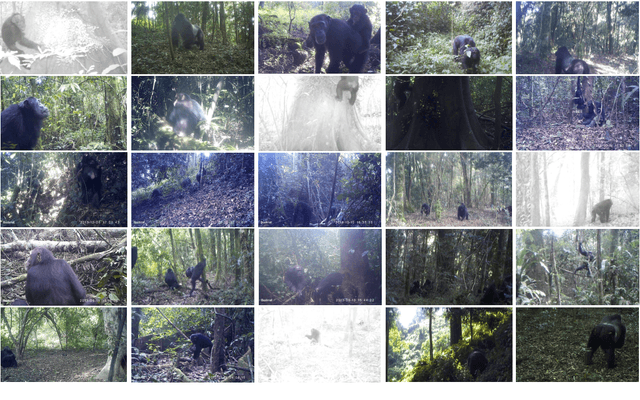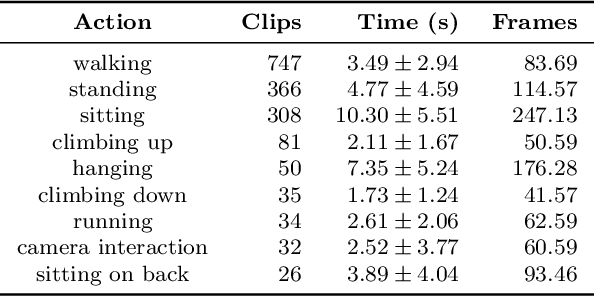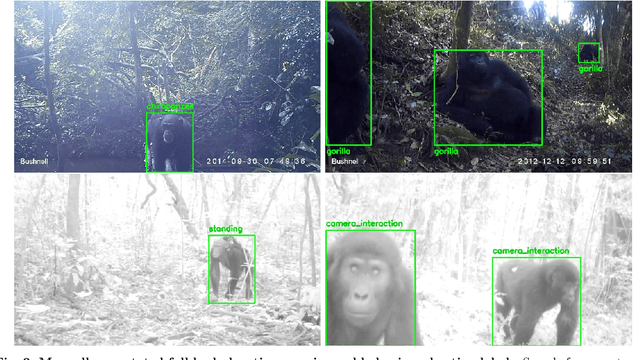Sorrel Jones
The PanAf-FGBG Dataset: Understanding the Impact of Backgrounds in Wildlife Behaviour Recognition
Feb 28, 2025Abstract:Computer vision analysis of camera trap video footage is essential for wildlife conservation, as captured behaviours offer some of the earliest indicators of changes in population health. Recently, several high-impact animal behaviour datasets and methods have been introduced to encourage their use; however, the role of behaviour-correlated background information and its significant effect on out-of-distribution generalisation remain unexplored. In response, we present the PanAf-FGBG dataset, featuring 20 hours of wild chimpanzee behaviours, recorded at over 350 individual camera locations. Uniquely, it pairs every video with a chimpanzee (referred to as a foreground video) with a corresponding background video (with no chimpanzee) from the same camera location. We present two views of the dataset: one with overlapping camera locations and one with disjoint locations. This setup enables, for the first time, direct evaluation of in-distribution and out-of-distribution conditions, and for the impact of backgrounds on behaviour recognition models to be quantified. All clips come with rich behavioural annotations and metadata including unique camera IDs and detailed textual scene descriptions. Additionally, we establish several baselines and present a highly effective latent-space normalisation technique that boosts out-of-distribution performance by +5.42% mAP for convolutional and +3.75% mAP for transformer-based models. Finally, we provide an in-depth analysis on the role of backgrounds in out-of-distribution behaviour recognition, including the so far unexplored impact of background durations (i.e., the count of background frames within foreground videos).
PanAf20K: A Large Video Dataset for Wild Ape Detection and Behaviour Recognition
Jan 31, 2024



Abstract:We present the PanAf20K dataset, the largest and most diverse open-access annotated video dataset of great apes in their natural environment. It comprises more than 7 million frames across ~20,000 camera trap videos of chimpanzees and gorillas collected at 14 field sites in tropical Africa as part of the Pan African Programme: The Cultured Chimpanzee. The footage is accompanied by a rich set of annotations and benchmarks making it suitable for training and testing a variety of challenging and ecologically important computer vision tasks including ape detection and behaviour recognition. Furthering AI analysis of camera trap information is critical given the International Union for Conservation of Nature now lists all species in the great ape family as either Endangered or Critically Endangered. We hope the dataset can form a solid basis for engagement of the AI community to improve performance, efficiency, and result interpretation in order to support assessments of great ape presence, abundance, distribution, and behaviour and thereby aid conservation efforts.
 Add to Chrome
Add to Chrome Add to Firefox
Add to Firefox Add to Edge
Add to Edge